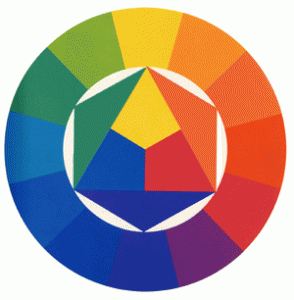Is color psychology a real thing? Do I need to know about that? More thought goes into choosing colors for a website than you may think, such as the color psychology. Colors not only give visual appeal, they can also create a feeling. While a light pink website with some white mixed in can make you feel cheery and happy, a black colored website can leave you feeling quite different.
Color Psychology and Its Effect On Web Design
Each website on the internet has a different feel to it and it is all due to color, layout and wording.Let’s say, for example, there is a website that is advertising a paradise vacation; the colors you would most want to use are neutral and “happy colors” such as light blues (that may resemble the color of relaxing ocean waves.) Maybe incorporate a tan color that can be compared to the color a sandy beach. Throw in a little bit of yellow that can represent the color of a hot days sun and you got yourself the most ideal colors for a paradise vacation website! When you’re selling a fantasy, something that you want consumers to buy, you need to sell them by using more than just good text and logos. You need to create a feeling for them!
If you’ve ever been to, or at least driven by a nightclub at night, then you know that the most used colors for signs and decor are black and purple. These two colors, when used together, give off a party feeling. How do you get that feeling from colors? It’s all about the color psychology and
color association. As we live in this world and become more familiar with our surroundings, we subconsciously become just as aware of colors to signify what appeals to use. Rainbow sprinkles on a vanilla ice cream cone may appeal to kids rather than adults because kids associate rainbow colors with the feeling of happiness and content, and not so much for the flavor.
If you’re interested in color effects then you must check out Photoshop Filters, and see how this editing program effects images!
What Colors Mean
Color psychology impacts what objects and themes we associate with certain colors.
What color do you think of when you see the words ‘Baby Boy’? Blue, right? More specifically, a soft blue with a light hue. And the same goes for when you see the words ‘Baby Girl’; the color pink. These colors have been long associated with the gender of a baby for countless years. Girl, pink. Boy, blue. It’s what we grew up to learn and associate them based off of our surroundings. Our culture influences color psychology.
Beyond just what we’ve been taught on color association and color psychology, there are more in-depth theories on what colors mean. Colors in the red area of the color spectrum are mostly known as the “warm colors”: red, orange, and yellow. While colors on the blue side of the spectrum are known as the “cool colors”: blue, purple, and green. Red represents action, aggressiveness, and excitement. Pair up red and gray, and it represents impulsiveness (great for those bidding websites out there!). Blue gives the feeling of sensitivity and loyalty. Pair up Blue with shades of red and brown, createy a feeling of safety.
The more you get to learn more about color psychology, the more you will understand what works the best for websites, and you may just find out why some of your favorite websites keep you coming back!
Corporations and business take adavanatge of color psychology. They use colors to help brand their business, to strategically target audiences. Find out how by reading The Psychology of Color in Logo Design by the Huffington Post.
